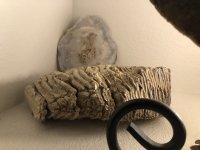uniface
Silver Member
Very long and very detailed/researched.
Much more information than you ever wanted to know.
https://malagabay.wordpress.com/2019/08/01/alaskan-muck-the-mastodons-of-new-york/
Much more information than you ever wanted to know.
https://malagabay.wordpress.com/2019/08/01/alaskan-muck-the-mastodons-of-new-york/
It hence appears that the animal ate his last meal from the tender mosses and boughs of flowering plants growing on the banks of the streams and margins of the swamps, rather than fed on submerged plants; and it is probable, moreover, that the pines and cedars, and their allies, formed no part of the mastodon’s diet.
Here we see that everything indicates a climate similar to that of New York today.
An interesting point is the difference between the mastodon’s diet indicated here and that indicated in the case mentioned earlier.
Speculation suggests that perhaps the diet in this second case indicates the animal’s preferred diet, or perhaps merely the diet available in the summer, while that in the earlier case, in which twigs were so important, may represent either the winter diet of the mastodon or an emergency diet, the result of the destruction of the normal diet by the events occurring just before the animal’s death.
In any case, the second diet indicates that whatever happened to that mastodon certainly took place in the summer.
Now it is obvious that the arguments used to explain away the evidence of climatic change in Siberia won’t work in New York.
Here there was certainly climatic change, with a vengeance.
Upvote
0








